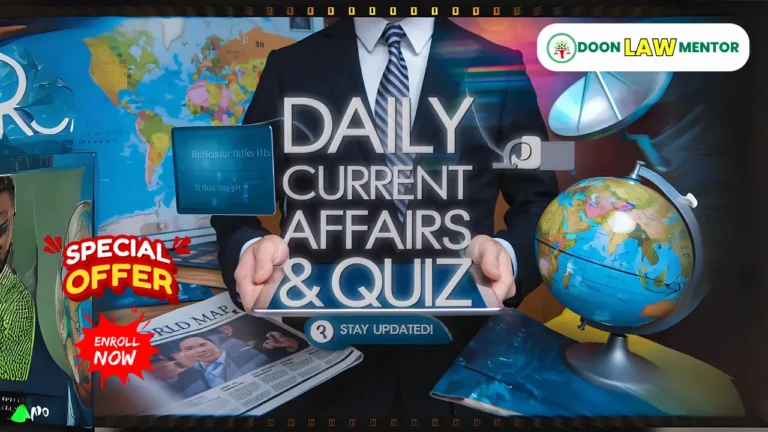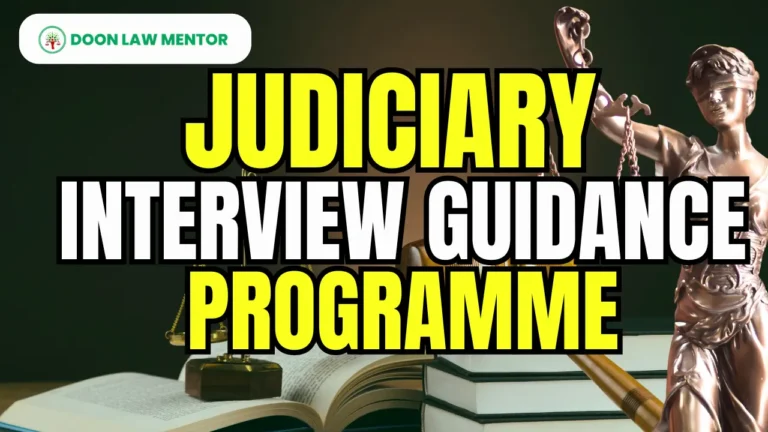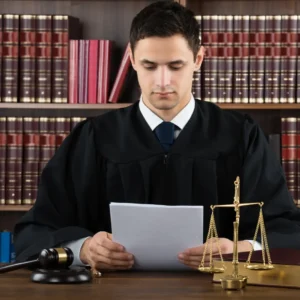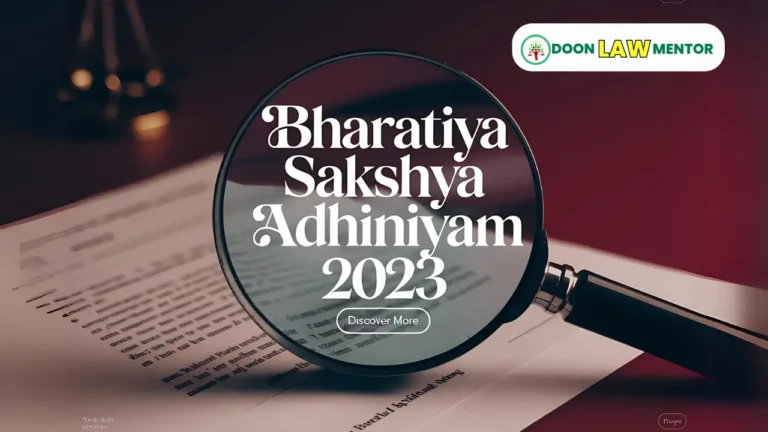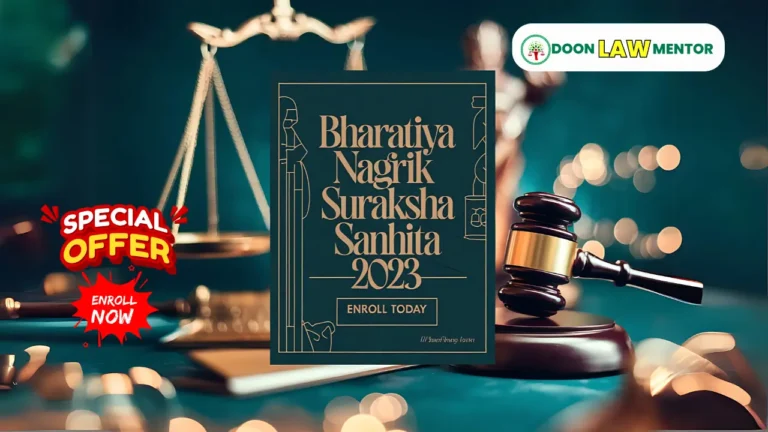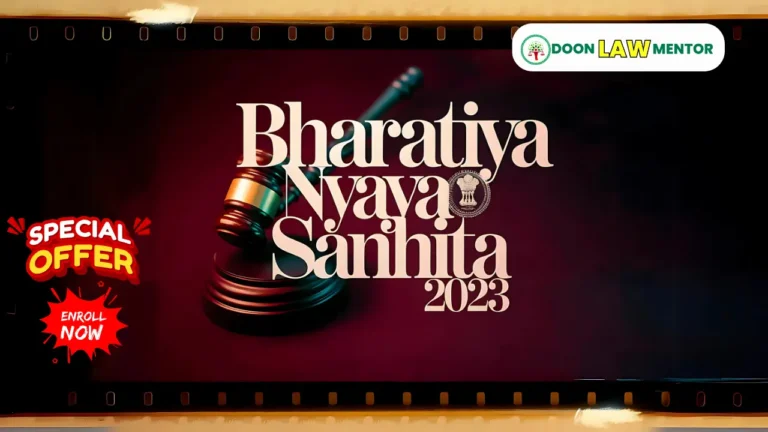Explore the role of Article 356 in imposing President’s Rule in India, its legal framework, and concerns about misuse. This guide offers insights for law students and judiciary aspirants preparing for 2025 interviews.
Table of Contents
Introduction to Article 356 and President’s Rule
Article 356 of the Constitution of India, 1950, empowers the President to impose President’s Rule in a state when its constitutional machinery fails, transferring governance to the Union. Envisioned as a safeguard for national stability, this provision has sparked debates over its frequent misuse for political motives. For law students and judiciary aspirants preparing for judiciary interview 2025, understanding the role of Article 356 is critical, as it frequently appears in questions on constitutional law and federalism. This article delves into the legal framework, historical applications, and judicial checks on Article 356, analyzing whether President’s Rule is being misused. With insights from landmark cases and practical tips from Doon Law Mentor, we aim to equip aspirants to tackle related questions with clarity and authority.
Legal Framework of Article 356
Article 356 allows the President to assume control of a state’s administration if satisfied, based on the Governor’s report or otherwise, that the state government cannot function in accordance with the Constitution. This results in President’s Rule, where the state legislature is suspended or dissolved, and the Union governs through the Governor. The provision is rooted in the Government of India Act, 1935, and aims to address emergencies like political instability or failure of governance.
Key features include:
- Duration: President’s Rule is initially imposed for six months, extendable up to three years with parliamentary approval (Article 356(4)).
- Judicial Oversight: The Supreme Court can review its imposition, as established in S.R. Bommai v. Union of India (1994) (Citation: AIR 1994 SC 1918).
- Constitutional Safeguards: Article 356 requires a proclamation, subject to parliamentary approval within two months (Article 356(3)).
Understanding these provisions is essential for answering state-specific law questions in judiciary interview 2025, particularly on federalism and Union-state relations.
Read More: 7 Daily Habits of Top Judiciary Exam Rankers in 2025: Secrets to Success
Historical Context and Usage of Article 356
Since 1950, Article 356 has been invoked over 100 times, often controversially. Initially used sparingly, its application surged in the 1970s and 1980s under political pressures. For instance, during the Emergency (1975–1977), President’s Rule was imposed in states like Tamil Nadu and Gujarat to suppress opposition governments, raising concerns about misuse. The Janata Party government (1977–1980) also used Article 356 to dismiss Congress-led state governments, highlighting its potential as a political tool.
Post-1990s, judicial interventions reduced arbitrary impositions. The S.R. Bommai case redefined the role of Article 356, limiting its use to genuine constitutional breakdowns. Despite this, recent instances, such as in Arunachal Pradesh (2016) and Maharashtra (2019), have sparked debates over political motivations, making the study of Article 356 critical for judiciary interview 2025.
Landmark Judgments Shaping Article 356
Judicial oversight has been pivotal in curbing the misuse of Article 356. Below are key cases:
1. S.R. Bommai v. Union of India (1994)
The S.R. Bommai case is a cornerstone in defining the role of Article 356. The Supreme Court ruled that President’s Rule is subject to judicial review, and its imposition must be justified by a breakdown of constitutional machinery, not political motives. The court struck down impositions in Karnataka and Meghalaya, emphasizing federalism and secularism. Citation: AIR 1994 SC 1918.
2. State of Rajasthan v. Union of India (1977)
This case upheld the imposition of President’s Rule in six states post-Emergency but limited judicial review to procedural errors. It highlighted the need for objective justification, setting the stage for stricter scrutiny in S.R. Bommai. Citation: AIR 1977 SC 1361.
3. Nabam Rebia v. Deputy Speaker (2016)
In the Arunachal Pradesh case, the Supreme Court restored the Congress-led government, ruling that the Governor’s actions under Article 356 were politically motivated and unconstitutional. This case reinforced checks on gubernatorial discretion. Citation: (2016) 8 SCC 1.
These judgments are essential for aspirants to cite when discussing the role of Article 356 in judiciary interview 2025.
Is President’s Rule Being Misused?
The role of Article 356 has been contentious due to allegations of misuse. Below are arguments for and against its misuse:
Arguments Supporting Misuse
- Political Manipulation: Historical instances, like the dismissal of state governments in Kerala (1959) and Uttar Pradesh (1998), suggest Article 356 was used to destabilize opposition-ruled states. The Maharashtra (2019) imposition, though brief, raised similar concerns.
- Gubernatorial Overreach: Governors, as Union appointees, have sometimes acted as political agents, as seen in Arunachal Pradesh (2016), prompting judicial intervention.
- Frequent Impositions: Over 100 invocations since 1950 indicate overuse, often for political gain rather than constitutional necessity.
Arguments Against Misuse
- Judicial Safeguards: Post-S.R. Bommai, courts have ensured President’s Rule is imposed only for genuine breakdowns, reducing arbitrary use.
- Rare Recent Use: Since 2000, Article 356 has been invoked sparingly, with only a few instances, like Jammu and Kashmir (2018), justified by security concerns.
- Parliamentary Oversight: Article 356(3) mandates parliamentary approval, adding a layer of accountability.
For judiciary interview 2025, aspirants should balance these arguments, emphasizing judicial checks like S.R. Bommai to demonstrate nuanced understanding.
Case Study: Answering a Judiciary Interview Question
Consider the question: “Is Article 356 being misused in India?” Using the IRAC method:
- Issue: Whether President’s Rule under Article 356 is misused for political purposes.
- Rule: Article 356 allows President’s Rule for constitutional breakdowns, subject to judicial review (S.R. Bommai v. Union of India, AIR 1994 SC 1918).
- Application: Historical misuse, like in Kerala (1959), contrasts with recent judicial checks in Arunachal Pradesh (2016), ensuring accountability.
- Conclusion: While misuse occurred historically, judicial and parliamentary safeguards have curtailed it, though vigilance is needed.
Video lectures from Doon Law Mentor guide aspirants in structuring such answers for state-specific law questions in judiciary interview 2025.
Table: Key Cases on Article 356
| Case | Year | Key Holding |
|---|---|---|
| S.R. Bommai v. Union of India | 1994 | Judicial review of President’s Rule; must be justified by constitutional breakdown |
| State of Rajasthan v. Union of India | 1977 | Limited judicial review to procedural errors |
| Nabam Rebia v. Deputy Speaker | 2016 | Struck down Governor’s misuse of Article 356 in Arunachal Pradesh |
This table aids quick revision for judiciary interview 2025 questions on Article 356.
Practical Tips for Judiciary Interview 2025
To excel in state-specific law questions in judiciary interview 2025 on Article 356, aspirants should:
- Study Key Cases: Memorize holdings and citations of S.R. Bommai and Nabam Rebia, as taught in Judiciary Gold lectures.
- Practice Mock Interviews: Simulate questions like “Discuss the safeguards against Article 356 misuse” using Pahuja Law Academy.
- Stay Updated: Follow recent developments, such as Jammu and Kashmir’s reorganization in 2019, which involved Article 356.
- Use Bare Acts: Review Article 356 and related provisions (Articles 355, 357) with resources from WritingLaw.
These tips ensure readiness for state-specific law questions in judiciary interview 2025.
Challenges in Addressing Article 356 Questions
Aspirants may struggle with:
- Complex Case Laws: Simplify S.R. Bommai by focusing on its core principles, as explained in Unacademy lectures.
- Balancing Arguments: Acknowledge misuse concerns while highlighting judicial safeguards, as taught in Law Prep Tutorial.
- Hypothetical Scenarios: Practice questions like “Can Article 356 be imposed for economic mismanagement?” using the IRAC method.
These strategies help tackle state-specific law questions in judiciary interview 2025 effectively.
Conclusion and Key Takeaways
The role of Article 356 is pivotal in maintaining India’s federal structure, but its history of misuse raises valid concerns. For judiciary interview 2025, aspirants must master its legal framework, judicial checks, and contemporary relevance. Key takeaways include:
- Article 356 enables President’s Rule for constitutional breakdowns, subject to judicial review.
- Landmark cases like S.R. Bommai have curbed misuse, reinforcing federalism.
- Historical instances show political manipulation, but recent safeguards limit abuse.
- Aspirants should cite cases and use IRAC to answer state-specific law questions in judiciary interview 2025.
Enroll in Doon Law Mentor’s courses and mock interviews to master Article 356 and excel in your judiciary interview 2025. Start your preparation today!
FAQs
1. What is the role of Article 356 in the Indian Constitution?
Article 356 allows the President to impose President’s Rule when a state’s constitutional machinery fails, transferring governance to the Union via the Governor.
2. How has the judiciary addressed the misuse of Article 356?
Cases like S.R. Bommai v. Union of India (1994) established judicial review, ensuring President’s Rule is imposed only for genuine constitutional breakdowns.
3. Why is Article 356 relevant for judiciary interview 2025?
It’s a key topic for state-specific law questions in judiciary interview 2025, testing knowledge of federalism, constitutional law, and judicial precedents.
4. How can I prepare for Article 356 questions in interviews?
Study Bare Acts, key cases like S.R. Bommai, and practice with mock interviews from Doon Law Mentor.
5. What are examples of Article 356 misuse?
Historical misuse includes Kerala (1959) and Uttar Pradesh (1998), where President’s Rule was imposed for political reasons, now curbed by judicial oversight.
6. How does Article 356 balance federalism and Union authority?
Article 356 ensures Union intervention in emergencies while judicial checks, like Nabam Rebia, protect state autonomy, maintaining federal balance.
Tags: Article 356, President’s Rule, constitutional law, misuse concerns, judiciary interview 2025, state-specific law questions, federalism
Hashtags: #Article356 #PresidentsRule #ConstitutionalLaw #JudiciaryInterview2025 #Federalism #DoonLawMentor

